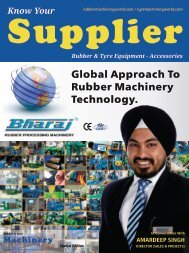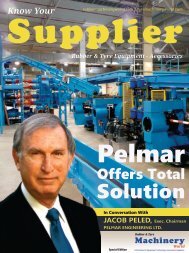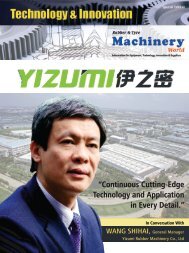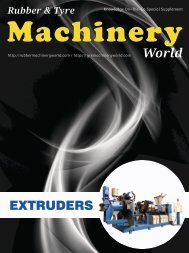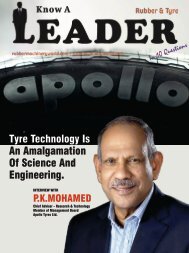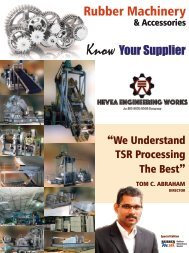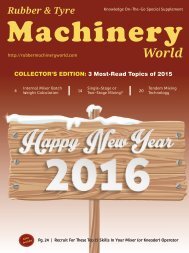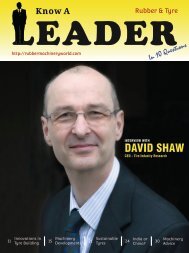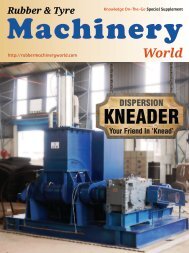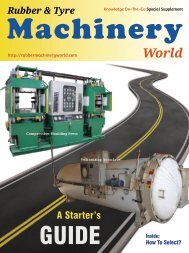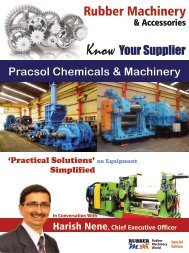The Art of Owning & Operating Rubber Calenders
Choosing the right Rubber Calender is important; learning to operate it smartly is equally key for your success with this machine. This edition covers all these aspects in a descriptive manner.
Choosing the right Rubber Calender is important; learning to operate it smartly is equally key for your success with this machine. This edition covers all these aspects in a descriptive manner.
You also want an ePaper? Increase the reach of your titles
YUMPU automatically turns print PDFs into web optimized ePapers that Google loves.
| CALENDERS |<br />
2. Increase the temperature by 5 degrees<br />
Celsius when you stop the rolls.<br />
loop. In this condition the roll surface<br />
temperature is below the water temperature.<br />
28<br />
Because this helps to maintain a more<br />
uniform roll surface temperature.<br />
You need to realize that the TCU<br />
(Temperature Control Unit) <strong>of</strong> your rubber<br />
calender controls the temperature <strong>of</strong> the<br />
water exiting the rolls and not the 'roll<br />
surface temperature'. This is an important<br />
distinction.<br />
Visualize these two scenarios –<br />
Scenario 1 – When the calender is not<br />
processing rubber (i.e. during warm-up and<br />
when the calender is stopped), the roll<br />
surface is losing heat to the atmosphere.<br />
Here, the TCU is actively heating the water<br />
Scenario 2 – When the calender is running<br />
and processing rubber, heat is being<br />
generated. Here, the TCU is cooling the water<br />
loop. In this condition the roll surface<br />
temperature is above the water temperature.<br />
From the above, you will realize that for a<br />
constant water circuit temperature, the roll<br />
surface temperature swings (above & below<br />
the water temperature) between the<br />
calender normal running condition and<br />
when the calender is stopped. This<br />
difference in roll surface temperature<br />
means that your rubber compound is being<br />
processed under varying conditions.<br />
Shrinkage and other properties <strong>of</strong> your<br />
processed compound will therefore vary.<br />
Image Source: Pelmar Engineering Ltd.<br />
<strong>Rubber</strong> & Tyre Machinery World | JUL 2016




